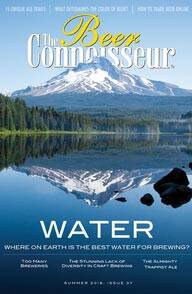Start 14-Day Trial Subscription
*No credit card required

Atlas Biomed Analyzes Microbiome of Spontaneously Fermented Beer and Cider
Atlas Biomed has done an in-depth analysis of the microbiome of spontaneously fermented beer and cider. Full details on this study are below.
A preventative healthcare company, Atlas Biomed, released a study of the yeast and bacterial communities in spontaneously fermented beer and cider. They published an article, “Characteristics of bacterial and yeast microbiomes in spontaneous and mixed-fermentation beer and cider” in the Food Microbiology magazine.
Researchers used the 16S rRNA and ITS sequencing to analyse the microbiome of yeast and bacterial communities in 20 varieties of craft beer and spontaneously fermented cider. The analysis showed that the bacterial communities found in beer are dominated by various Lactobacillus species, whereas cider demonstrates higher species diversity. The yeasts were represented by a wide range of species beyond the conventional Saccharomyces beer yeast.
They managed to suggest associations of the microbiome composition with beer styles and to identify the most promising compositions for detailed study.
They also measured the levels of short organic acids in drinks (acetic, lactic and others) using the interactive data analysis platform enabling to link metabolome to microbial communities and consumer preferences.
The study shows that high-throughput sequencing of the beer and cider microbiome could potentially help to improve predictability and reproducibility of the taste and aroma of beverages and provide advanced microbiological control in production.
In the long term, the team’s research and the tools they used can bring great practical benefits not just to the breweries but also the microbiologists from other fields. In particular, besides helping to develop innovative beer blends, the new technologies will make it possible to identify new microorganisms for biotechnological applications.
For more information: https://www.sciencedirect.com/science/article/pii/S0740002020302471



